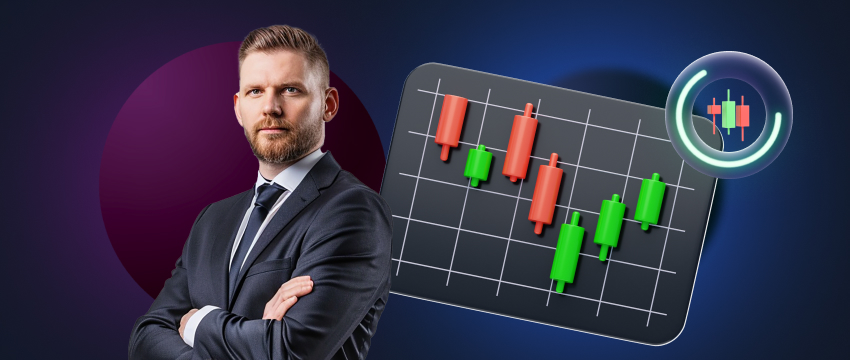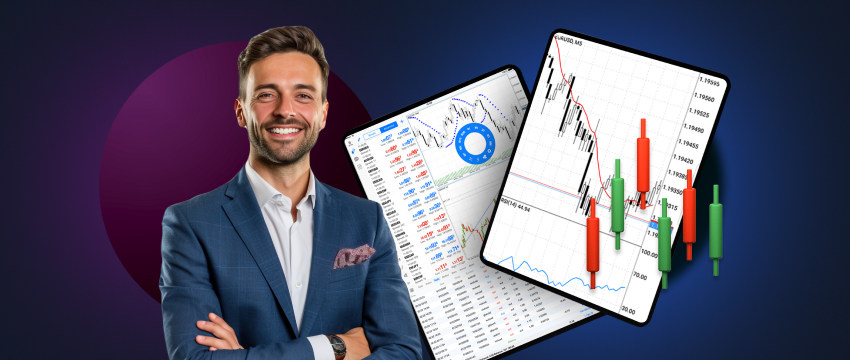The most challenging aspect of trading is gaining the qualitative skills. Those that come from experience or time spent in the markets. Being realistic and realising that you are probably just an average trader and that’s okay. It’s about learning how to keep going even when your account experiences a few losses. It’s also knowing how to make money with your trading strategy and having the self-assurance to persevere through difficult times.

What is trading?
Trading involves buying and selling financial assets with the goal of generating revenue. These instruments come in a range of assets with financial values that are subject to fluctuations. You can speculate on which way the prices will go.
It’s possible that you’ve heard of funds, shares, and stocks. On the other hand, you can trade thousands of pasaran kewangan using a wide range of products. You can gain exposure to a wide range of markets, including the FTSE 100, the S&P 500, international currencies like the US dollar and Japanese yen and many more.
How does trading work?
If you trade and market prices fluctuate in the exact same direction as your own speculation, you will profit, if not, you will lose.
The fundamental idea to keep in mind is supply and demand. Demand increases and prices rise if there are more consumers than sellers in the market. Prices decrease when there are more sellers than buyers in the market. This lowers demand.
Exposure to assets can only be obtained directly on an exchange or over the counter (OTC). In order to trade over-the-counter, the trader and the broker must agree on the price. At which to buy and sell an asset. On the other hand, a centralised exchange is a well-managed marketplace where you can transact directly for a particular kind of instrument. When trading OTC with derivatives like CFDs, saham are more accessible (as opposed to directly on a centralised exchange).

What is difficult about trading?
One of the primary risks associated with trading is that your potential for profit or loss is not limited. With the amount of capital you have invested. Because trades are leveraged, opening a larger position requires putting down a smaller deposit, known as margin. Profits and losses, however, are determined based on the entire position size and may therefore significantly exceed your margin amount.
Trading CFDs on different assets allows you to trade both long and short positions. Since market prices could theoretically rise indefinitely, short selling is particularly dangerous. Your risk when short-selling rises in tandem with the asset’s price. Fortunately, there are strategies to help you control your trading risk, such as limit orders and stop orders.
Stop-loss orders
Stock selection, timing the market, and entry are not the hardest aspects of trading. One of the hardest things to do is figure out where to place stop-loss orders. When should you accept your loss and give up on a trade?
Regardless of your level of analysis or level of planning precision, there will inevitably be instances where you are caught off guard. Frequently, you will feel as though the market is using your stop-loss to figure out when the day’s low point is. When you are stopped out, the stock often reverses and rises immediately again.
First and foremost, traders must acknowledge that stop-losses will never be perfect. Although you as a trader can work to optimise your strategy, you must accept that you won’t always be satisfied with the outcome. You can begin to identify an approach that best enables you to cut your losses and potentially increase your revenue once you have made the mental shift to accept that a stop-loss order system will never be flawless.
How much can you afford to lose
Aside from feelings and other factors, the only thing you can manage is the amount of loss you are willing to incur before you even start the trade. People can now feel more at ease because they have control over it. However, the amount that the market offers you is determined by the market. There are basically two possible outcomes from the moment a trade is made: you either win or you lose. Now that you have the ability to determine how much can be lost, this frequently hits people in the head and boosts their egos. Making money isn’t always a sign of a win because the amount of money you make might not be enough to cover the risk.
Everybody trades in a unique way. On the other hand, a trader may experience a run of losing trades. Naturally, this can occur if you trade several currencies in a one-hour period, many of which are correlated. These losing streaks can virtually erase profits that have been made over an extended period of time by failing to collect enough profit.
Take profit
Beginner traders typically start out with more winning trades and fewer losing ones as they learn the trading strategy and gain confidence in using it. They see all of their profits, and they unintentionally take profits early in an attempt to hold onto and protect these profits. In addition to losing their money, they fear that they will have to satisfy their ego. They need a win after suffering two losses.
They now trade based more on fear and emotion than on reason. Even though it is bad for long-term trading success to take those profits too soon, a win, no matter how small, will boost their ego. The truly intriguing aspect is that, in the event of a trade loss, they always lose the amount they had planned to risk because this is something they can manage. It seems that they would prefer to let profits run and would prefer to close a losing trade early. Conversely, that is true.

How to deal with the hardest things in trading
Trading is a true mental game. Every day, people play this game with themselves. If you can’t defeat yourself in the game, the market is pretty much meaningless. This is because the market will be perceived as an emotional roller coaster that provides all those who are unable to achieve this in their regular lives with highs and lows of sweet, raw emotion.
As far as stop-losses are concerned, it’s critical to have a predetermined take-profit strategy. It’s the most difficult thing and the most difficult trading skill to master. Regarding stop-losses, it matters most that you are methodical and well-organized. Poorly designed stops must not keep you from using them in other situations. You are still accountable for using them the next time even if they don’t work.
Although there will never be a perfect method for placing stops, we must use some sort of discipline if we want to be successful traders. You can potentially increase your returns by adjusting how you use stops.
In Conclusion
The conclusion is that the hardest part of trading is letting the market run its course and taking profit levels because you will never be sure if you will succeed in reaching your goal. However, a beginner’s lack of market experience and strategy testing means that doubt only exists in his/her mind. However, it is an essential component of long-term trading success.
It takes skill to become a trader. It takes patience, ability, and self-control. Although many who attempt it lose money, you might be able to develop a potentially profitable strategy with the help of the methods and techniques mentioned above.
Penafian: This material is for general informational and educational purposes only and should not be considered investment advice or an investment recommendation. T4Trade is not responsible for any data provided by third parties referenced or hyperlinked in this communication.




